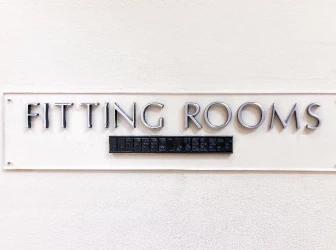Fitting rooms are essential spaces in retail stores, providing customers with a private area to try on clothes. For individuals with disabilities, it is crucial that fitting rooms are designed to be accessible, accommodating, and respectful of privacy. In this blog post, we will explore the ADA requirements for fitting rooms, ensuring accessibility, privacy, and inclusivity for all customers.
Importance of ADA Fitting Room Requirements
ADA fitting room requirements are in place to ensure that individuals with disabilities have equal access to and can comfortably utilize fitting rooms in retail establishments. By complying with these requirements, businesses create an inclusive shopping experience and foster customer satisfaction and loyalty.
ADA Fitting Room Requirements
Size and Space: ADA-compliant fitting rooms must be of sufficient size to accommodate individuals who use mobility aids, such as wheelchairs or walkers. The minimum size requirement ensures that there is ample space for maneuvering and transferring between mobility devices and the fitting room bench or mirror.Entry and Doorways: The entry to the fitting room must be wide enough to allow easy access for individuals with disabilities. The ADA specifies a minimum clear width for doorways, ensuring that they can be comfortably entered and exited by wheelchair users.Bench or Seating: ADA-compliant fitting rooms must provide a sturdy and secure bench or seating area. This allows individuals with disabilities to sit while trying on clothing or while waiting for assistance. The bench or seating should be positioned to accommodate different transfer methods, such as side transfers.Grab Bars: Fitting rooms should be equipped with grab bars to assist individuals with mobility challenges in maintaining balance and stability. These grab bars should be properly installed and meet ADA guidelines for height and location.Accessibility Signage: ADA-compliant fitting rooms should have clear signage indicating their accessibility features, such as the presence of grab bars and an accessible bench. The signage should include visual and tactile elements, such as raised characters and braille, to ensure accessibility for individuals with visual impairments.Privacy and Security: ADA fitting rooms should be designed to provide privacy and security for all customers. The layout and construction should prevent visual and auditory intrusions from outside the fitting room, ensuring a comfortable and confidential space for individuals to try on clothing.Lighting: Adequate lighting is essential in fitting rooms to facilitate visibility and help individuals assess the fit and appearance of clothing. The lighting should be evenly distributed and adjustable to meet the needs of individuals with varying visual abilities.Conclusion
Complying with ADA fitting room requirements is crucial for ensuring accessibility, privacy, and inclusivity for individuals with disabilities. By providing adequate space, entryways, seating, grab bars, signage, and appropriate lighting, businesses can create fitting rooms that accommodate the needs of all customers. Investing in ADA-compliant fitting room design and signage demonstrates a commitment to inclusivity and enhances the overall shopping experience. Order ADA-compliant fitting room signage today and promote an accessible and welcoming environment for all customers.


